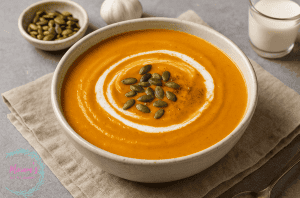Intermittent Fasting 101: What It Is, How It Works, and How to Get Started by Miriam Rees
What Is Intermittent Fasting (IF)?
Intermittent fasting (IF) is a popular and flexible eating pattern that cycles between periods of eating and fasting. Unlike traditional diets, intermittent fasting doesn’t tell you what to eat—it focuses on when you eat. It’s commonly used for weight loss, metabolic health, and long-term wellness.
Popular Intermittent Fasting Methods
- 16/8 Method: Fast for 16 hours, eat during an 8-hour window (e.g., 12 PM–8 PM).
- 5:2 Method: Eat normally 5 days a week, restrict calories (500–600) on 2 non-consecutive days.
- Eat-Stop-Eat: Fast for 24 hours once or twice a week.
Top Benefits of Intermittent Fasting
IF has become a go-to strategy for many looking to simplify eating and boost health. Here are some science-backed benefits:
✅ Supports Weight Loss & Fat Burning
By shortening the eating window, most people naturally reduce caloric intake. Fasting can also enhance fat burning by improving hormone balance—especially insulin and growth hormone.
✅ Simplifies Your Routine
With fewer meals to plan and prep, IF can save time and reduce decision fatigue around food.
✅ Improves Insulin Sensitivity
Fasting may lower insulin levels and support better blood sugar control—potentially lowering the risk of type 2 diabetes.
✅ Boosts Cellular Repair
During fasting, your body initiates autophagy—a process that removes damaged cells and supports regeneration, which may promote longevity.
✅ Enhances Brain Function
Research suggests fasting may improve mental clarity, focus, and protect against neurodegenerative diseases.
Potential Drawbacks of Intermittent Fasting
While many thrive with intermittent fasting, it may not be ideal for everyone. Consider these possible downsides:
⚠️ Hunger and Cravings
Especially at the beginning, hunger can be intense and challenging to manage.
⚠️ Risk of Nutrient Deficiency
Skipping meals without careful planning may lead to insufficient intake of essential nutrients.
⚠️ Social Challenges
Fasting windows may interfere with meals or gatherings, making socializing tricky.
⚠️ Not for Everyone
Pregnant or breastfeeding women, people with medical conditions, or those with a history of disordered eating should consult a healthcare provider before starting IF.
⚠️ Overeating During Eating Windows
There’s a risk of compensating with larger meals, which may reduce the effectiveness of fasting.
How to Start Intermittent Fasting Safely
If you’re ready to give intermittent fasting a try, follow these beginner-friendly tips:
✅ Pick the Right Method
Start with a schedule that fits your lifestyle—most beginners find the 16/8 method the easiest to maintain.
✅ Ease Into It
Begin with a 12-hour fast and slowly increase your fasting window over a few weeks. This helps your body adjust gradually.
✅ Stay Hydrated
Drink water, herbal teas, or black coffee during fasting hours to stay energized and curb hunger.
✅ Prioritize Nutrient-Dense Foods
When you do eat, focus on whole foods: lean proteins, healthy fats, fruits, vegetables, and low-starch options.
✅ Listen to Your Body
If you feel dizzy, overly fatigued, or unwell, adjust your fasting schedule or consult a professional.
✅ Practice Mindful Eating
Use your eating window to slow down and enjoy meals without distraction. This helps prevent overeating and supports a healthy relationship with food.
Final Thoughts: Is Intermittent Fasting Right for You?
Intermittent fasting can be a powerful tool for weight loss, improved metabolic health, and simplified eating. But it’s not a one-size-fits-all approach. Like any lifestyle change, success depends on finding what works best for you.
Start slowly, monitor how you feel, and make adjustments as needed. And remember—health isn’t just about when you eat, but how you nourish your body overall.
Ready to give intermittent fasting a try?
Stay consistent, be patient, and always choose an approach that feels sustainable for your life.





